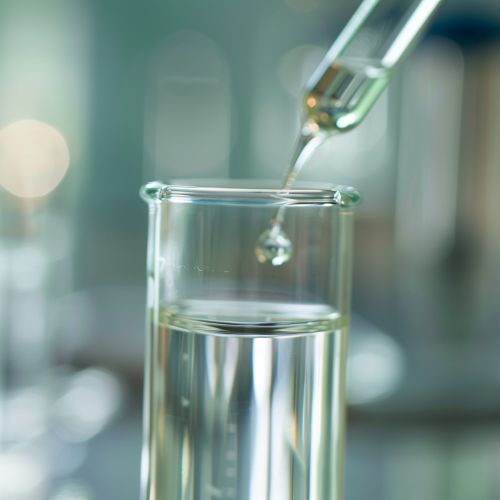Chemical substance
Introduction
A chemical substance is a form of matter having constant chemical composition and characteristic properties. It cannot be separated into components by physical separation methods, i.e., without breaking chemical bonds. Chemical substances can be chemical elements, chemical compounds, ionic compounds or polymeric materials. They can be elements or compounds, which are the types of particles that chemists typically deal with.
Classification
Chemical substances are classified in terms of their structure, phase, as well as their chemical compositions. They can be analyzed using the tools of chemical analysis, such as spectroscopy and chromatography.
Pure substances
A pure substance has a definite and constant composition with distinct chemical properties. Every pure element or compound has a characteristic set of properties that gives it its chemical identity.
Mixtures
A mixture is a physical combination of two or more pure substances in which the identities are retained and are mixed in the form of solutions, suspensions, and colloids.
Chemical bonds
Chemical substances are held together by chemical bonds, which are attractions between atoms that allow the formation of chemical substances that contain two or more atoms. The two main types of bonds are ionic bonds and covalent bonds.
Chemical reactions
A chemical reaction is a process that leads to the transformation of one set of chemical substances to another. Chemical reactions can result in the formation or dissociation of molecules, that is, molecules breaking apart to form two or more molecules or rearrangement of atoms within or across molecules.
Properties of chemical substances
Chemical substances have a unique set of physical and chemical properties, and may undergo changes that are strictly defined by the principles of thermodynamics and quantum mechanics.
Physical properties
Physical properties of a chemical substance can change without a change in composition. These properties include color, smell, freezing point, boiling point, melting point, infra-red spectrum, attraction (paramagnetic) or repulsion (diamagnetic) to magnets, opacity, viscosity and density.
Chemical properties
Chemical properties of a substance can change, producing new substances that have different compositions and properties. The chemical properties of a substance are largely determined by its chemical bonds.
Uses of chemical substances
Chemical substances are used in a wide variety of fields including medicine, manufacturing, and scientific research. In medicine, they can be used as medications or in medical procedures. In manufacturing, they are used in a variety of industrial processes where they are used in the production of a vast array of materials.
Safety and regulation
The production, distribution, use, and disposal of chemical substances has been recognized as a global environmental and health problem. Most countries have regulations for the production and handling of chemical substances.
See Also


